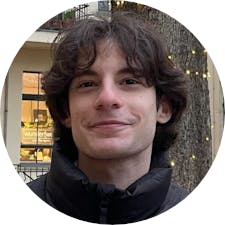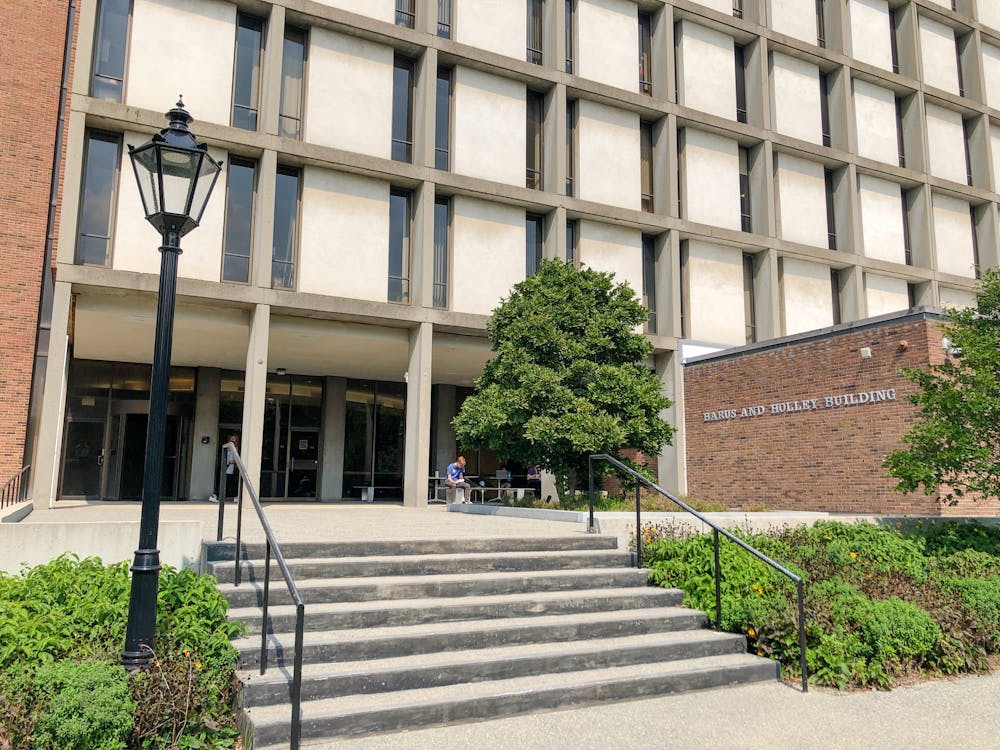In spring 2021, a group of University faculty and administrators came together with the task of developing a proposal for a potential Institute for Biology, Engineering and Medicine. Over a year later, a motion to establish the Institute — referred to as I-BEAM — effective July 1 was passed at the April faculty meeting.
The Institute is currently waiting on approval from the Corporation, which Professor Vicki Colvin expects will occur during its May meeting. Colvin currently serves as the director of the University’s Center for Biomedical Engineering, which the Institute will build on.
“Brown has this amazing history in biomedical engineering,” Colvin said. “It turns out that some of the first researchers in biomedical engineering who were making artificial organs back in the 1960s and 70s were actually faculty at Brown.”
The University founded an on-campus Center for Biomedical Engineering — which has its own undergraduate concentration — in 2002. Since the center’s creation, there has been “an explosion of math, engineering and biology” at the University, Colvin said.
“Nowadays, biologists are very quantitative in their work. We are able to predict biological systems and describe them using mathematics,” Colvin said. “That’s really broadened the kinds of people who do engineering in biology and medicine.” She added that “wedding” computation and experiment will be central to I-BEAM’s brand.
“There has been an explosion in healthcare technologies over the last decade,” Dean of Engineering Larry Larson, who was part of the initial planning group, said. “The intersection of medical science, technology and medicine is just transforming the lives of people all over the planet.”
“We felt that an institute would be a great way to capture the potential of this growth and really accelerate Brown’s leadership in it going forward,” he added.
I-BEAM’s mission will be taking “the life sciences and technology and translating them into … clinical solutions for patients,” Larson said. “We want to span that entire food chain (from basic science to clinical applications) and have a major influence in every step of the way.”
The Institute's governing body will be made up of a director and faculty members — including professors from the biology, engineering and medicine departments, a chair of a hospital department and faculty from two other physical sciences, according to Colvin. Undergraduate and graduate student organizations, such as the Undergraduate Biomedical Engineering Society, have also been integrated into the Institute’s planned structure.
I-BEAM’s management team will include a faculty steering committee that will oversee the Institute's strategic planning, looking at what sort of programming from “conferences to workshops … we want to be doing in … three to five years,” Colvin said.
Bridging departmental gaps for faculty
The Institute will be working toward “bringing together a really unique combination of faculty,” Colvin said.
Professor of Mathematics George Karniadakis, who was not involved with the planning committee, believes I-BEAM will help faculty members who do not typically cross the bounds of their departments by getting them “out of their comfort zones” and exploring more interdisciplinary research.
“Personally, I would like to be engaged with more faculty, especially with medical doctors from the hospitals,” he added.
“What an institute allows you to do is bring big groups of faculty together to look at big problems,” Larson said. I-BEAM will work on bringing clinicians who work on problems together with biologists, applied mathematicians and other members of the faculty through small research groups.
“We can help faculty come together (and) lower some of those barriers in terms of time and funding that you need in order to” explore new research projects, Colvin said.
Fostering student interdisciplinary studies
I-BEAM will also engage the University's student body, which is important to collaborations in research because, while faculty supervise research, it is students who are in the lab often, Colvin said. “They’re one of the secret weapons.”
According to Karniadakis, I-BEAM will be an “interdisciplinary approach to research” that will allow students to work in different fields and understand the usefulness of their studies.
Karniadakis believes there is great interest in the creation of such an institute among the University's student body, as biomedical engineering is the highest declared degree among undergraduate students at the School of Engineering, he said.
One way the Institute will build on this interest is by partnering with the Brown Technology Innovations Office, PRIME Program or the Nelson Center for Entrepreneurship to create internship positions for students interested in the commercial side of biomedical technology, according to Colvin. Students in these internship positions would be tasked with evaluating “what kinds of questions really demand technical sophistication … (and evaluating) competing technology,” she added.
While Colvin expects that the biomedical engineering concentration will largely remain the same, she hopes to develop courses at the Institute that would allow interested students to explore other disciplines.
“I am really interested in creating what I call bridge classes, in which a mathematician (studying at the Institute) actually might spend some time growing some cells,” she said. These classes would also allow biology students to “step out and really do a more hardcore, computational project.”
The Institute also plans to develop a two-year research experience where students rotate between labs of different disciplines, according to Colvin. This would help bridge the different fields housed at the Institute and allow students to learn a variety of skills and concepts unique to various studies.
Engaging the Providence community
Larson believes that helping upkeep Rhode Island’s “robust hospital system” will also be central to I-BEAM’s mission. “We want to have great academic ties with the hospitals,” he said.
Hospitals produce “a lot of data” that is lost, Karniadakis said, so I-BEAM will use this data to develop better therapies for patients. “Bringing science and prognostic tools to doctors is very important,” he added.
“We have great partnerships with all of our local hospitals. Many people who practice at local hospitals are faculty at Brown,” Larson said. “And we want to actually deepen those collaborations and push them even harder in the years ahead.”
“We’re trying to get clinical solutions to our hospital partners so that they can help (Providence) community members,” he added.
To further serve the broader Providence population, Colvin said that I-BEAM would have a community advisory board that would invite people who live in Providence “from a diverse array of backgrounds” to help the institute understand “what people actually want in their lives.”
I-BEAM would also look to increase the number of women and underrepresented minorities in engineering, which is already an “attractive” field to these groups, according to Colvin. The institute would grow its faculty diversity with more conscious hiring efforts and strengthen partnerships with regional institutions.
The research conducted by faculty and students within the institute would also promote diversity, Colvin said, adding that creating “affordable and equitable (health) systems” will be central to the institute’s mission.
Schools across the country, including the California Institute of Technology and Massachusetts Institute of Technology, have already transformed themselves into leading research institutions in the field of biomedical engineering, according to Karniadakis.
“Brown University is a beacon of education in Rhode Island, so we don’t want to see it falling behind,” he said. I-BEAM “will be putting Brown on the map."

Alex Nadirashvili was the managing editor of multimedia and social media for The Brown Daily Herald's 133rd Editorial Board. As a former University News editor, he covered faculty, higher education and student life, though his proudest legacy is The Brown Daily Herald TikTok account.
Kaitlyn Torres was the senior editor of community for The Brown Daily Herald's 133rd Editorial Board. She previously covered diversity as a University News section editor. In her free time, Kaitlyn enjoys listening to The Arctic Monkeys and going on archaeological digs.





